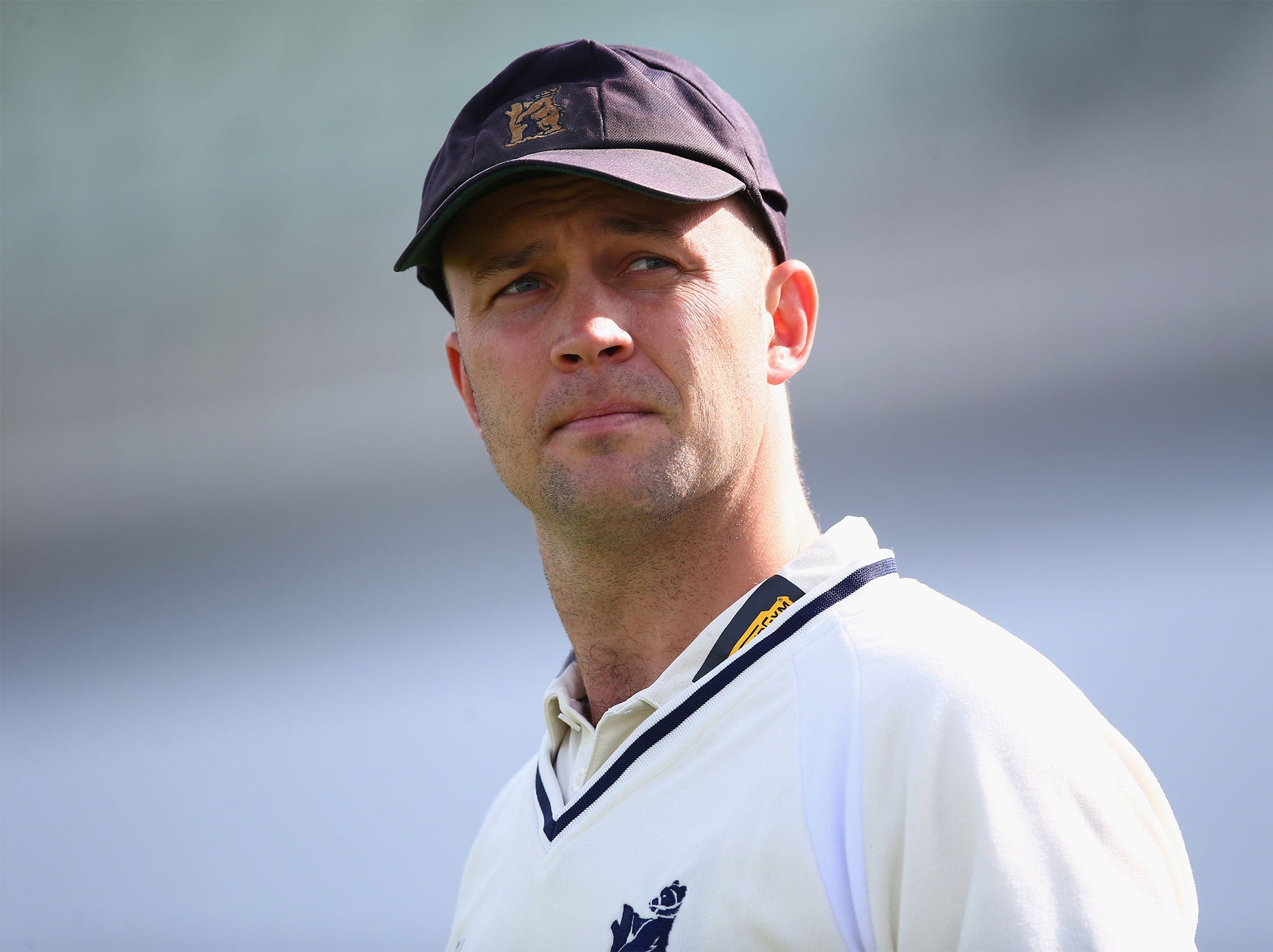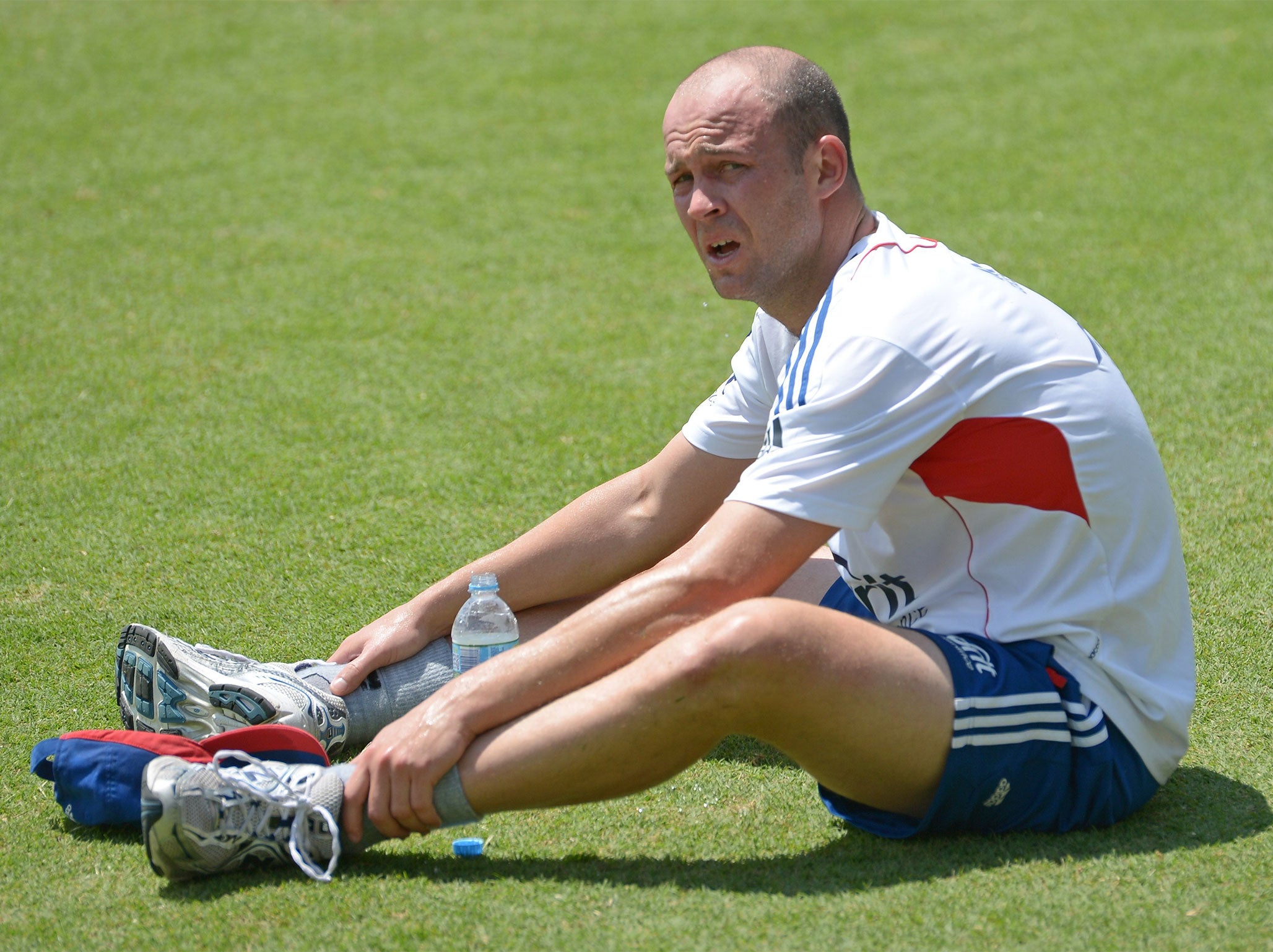Endlessly resilient and cursed by consistency, Jonathan Trott's greatness was taken for granted
Perhaps the ultimate measure of his worth is the fact that it’s three years since his last Test, five years since his peak, and still his absence burns like a scar

For a follower of English cricket, the retirement of Jonathan Trott - announced on Thursday and due to take place at the end of this season - was apt to bring flooding back all sorts of golden memories. The great innings: Brisbane and Melbourne, Nagpur and The Oval. The great triumphs he helped sculpt: three victorious Ashes series, wins home and away against India. Then, of course, there were the shots. The nudge through mid-wicket. The nurdle through square-leg. The glide through mid-wicket. The clip through mid-wicket. The awkward shovel where he would leap across his stumps as if the crease were a live wire and deflect the ball at the top of its bounce, through mid-wicket.
This is, of course, a deeply reductive assessment of Trott’s strokeplay, which also boasted a more than passable back-foot force, a strong cut and a fine hook, at least until the Australians tampered with it in 2013. But then, in a way, this is entirely in keeping with how Trott was regarded during his peak: even as he was piling on the runs, rewriting the record books and anchoring one of the great England sides of modern times, he remained a strangely divisive player, one for the most part admired rather than loved.
All of which feels faintly ridiculous now, in the midst of England’s current batting famine, when most of us would simply be grateful for a No3 who knew where his off-stump was. And one of the interesting things about Trott’s Test career, recent though it was, is the extent to which those feats already feel like part of a bygone era, how upsettingly hazy those memories already feel.
What luxurious times they must have been: graced with the emergence of one of England’s finest ever No3s, we merely stifled a yawn and grumbled about his scoring rate. Too slow. Too fidgety at the crease. Too miserable. God, we were idiots.
The tale of Trott was always one of graft triumphing over an absence of natural talent, but this was unfair on him. His may not have been a glitzy, flamboyant gift like Kevin Pietersen’s, but something of a different order entirely: a talent for survival. Endlessly adaptable, endlessly resilient, Trott found a way wherever he went, whether it was the turning pitches of the subcontinent, the green seamers of England or the baked earth of Australia. In an era full of great long-haul batsmen - Rahul Dravid, Hashim Amla, Shivnarine Chanderpaul - Trott was briefly the best of the lot.
And at his best - around 2010-11, and again in 2012-13 - Trott came perilously close to eliminating form from his game. It took him almost 18 months to register his first duck in Test cricket, and another 18 months to register his second. He still boasts the sixth-highest one-day international average of all time, even the role he played was one that no longer exists today. Perhaps, ultimately, Trott was cursed by consistency, his greatness essentially taken for granted, as if it ran out of the tap.

Then, quite suddenly, it was all over. And there is perhaps a tangential discussion to be had here over why so many of the golden lambs of the Andy Flower generation ended their careers with such spectacular abruptness. Andrew Strauss flamed out in a dramatic, tear-soaked supernova of stress, exhaustion and rogue texts. Graeme Swann went from England’s best spinner to banterlicious ex-pro in the space of one Melbourne afternoon. Matt Prior went over a cliff like the bad guy in a Warner Brothers cartoon, legs churning fresh air. Pietersen, meanwhile, was simply discarded, with all the delicacy of a well-loved Eastenders character being killed off for ratings.
And then there was Trott, whose exit was perhaps the most poignantly brutal of all. Though he was granted a swansong in the West Indies in 2015, the true end came much sooner: perhaps even before Mitchell Johnson and friends bounced him out of the Ashes in 2013-14. The signs were there earlier that year: he was beginning to read his own press, lash out in interviews, work himself to destruction in the nets. And as we now know, anxiety and stress were eating him from the inside. During that summer’s Oval Test, wracked with fear, he considered driving his car into the Thames, or burying it into a tree: anything to get him out of having to play.

It would be too easy to lay the blame solely at Flower’s feet here, even if his exhaustive management style, his creative use of confrontation, his casual exploration of players’ mental and physical limits, were surely a contributing factor. For a batsman who at times seemed to be made of pure granite, Trott bruised surprisingly easily. As the life of the professional athlete began to consume him, Trott realised that the single-minded childhood obsession that was driving him as a player was also making him less contented as a person. Trott the kid wanted to be special. Trott the adult just wanted to be normal.
The happy coda was that after extracting himself from the cauldron of international sport, Trott eventually did discover that sense of balance. He returned to Warwickshire, winning them the One-Day Cup final at Lord’s in 2016. And though he has hardly been setting the four-day game alight of late, Trott will nonetheless leave a void behind him. Certainly, the current England side are crying out for a player of his simple, unfussy competence at first drop.

On a broader level, though, it is not unreasonable to wonder whether domestic cricket will ever produce a batsman like Trott again. While the shortest format morphs with ever greater alacrity into a sort of circus entertainment, complete with amazing muscle-men, human cannonballs and genetic freaks, Test cricket is becoming an increasingly hostile environment for the late developers, the grafters, the players who simply arrive at the wicket and sniff the air and bat all day. Amla is 35. Dean Elgar, Che Pujara, Alastair Cook and Azhar Ali are all the wrong side of 30. Where are their replacements going to come from?
Trott himself is 37, and surely nobody would begrudge him the happiest of retirements. He has turned his hand, with some success, to commentary and punditry. He joined England’s under-19 setup over the winter as a batting coach, which probably offers the best clue as to his next move. Equally, though, perhaps the ultimate measure of his worth is the fact that it’s three years since his last Test, five years since his peak, and still his absence burns like a scar.
Join our commenting forum
Join thought-provoking conversations, follow other Independent readers and see their replies
Comments
Bookmark popover
Removed from bookmarks